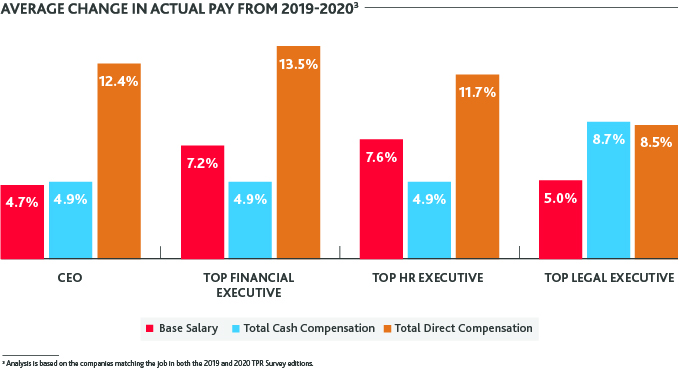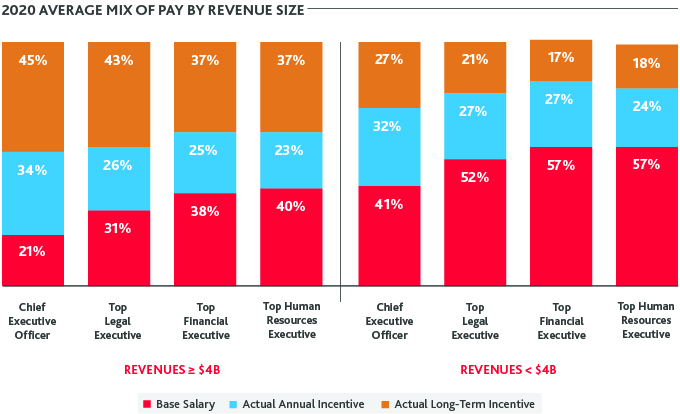2020/2021 Health Insurance Executive Insights Report: Managing Compensation in the Face of Continued Uncertainty
Introduction
The recently published 2020 BDO Health Insurance Industry Executive & Management Total Potential Remuneration (TPR) Survey is a rich source of information about executive compensation relied upon by boards and management.
The BDO survey reveals insights to key questions related to compensation and performance measures that help health insurers focus on the right executive compensation strategies that yield desired results. This summary highlights a few of the key findings from the full report, which contains extensive data that can help insurance companies address a variety of issues, including:
- Do companies need to restructure pay and delivery to retain their top team?
- Will performance metrics need to be adjusted, without lowering the bar, to more accurately account for real growth and performance?
- How do companies select performance metrics and set goals in the face of continued uncertainty?
- How much of an executive’s pay should be at risk (i.e., variable pay that is only earned if specific performance metrics are achieved)? Is the mix of at-risk pay properly balanced with a clear line of sight to the business objectives?
- How much pay should be allocated to Supplemental Executive Retirement Plans (SERPs) and Change of Control agreements (COCs)?
Top Executive Pay Outpaces Revenue Growth
On average, total direct compensation (TDC)[1] for top executives increased between 8-14% year-over-year—higher than the 3% increase in total revenue[2] for these companies. Salaries for the CEO and most other top executives are increasing faster than the typical merit increase, which hovers around 3%.

Executive pay levels typically increase alongside company size. For instance, the median salary for CEOs in companies with revenues greater than $4 billion is about 20% higher than the median salary for CEOs at companies with revenues of less than $4 billion. However, that does not necessarily mean that larger companies overpay their CEO. We compared pay levels relative to revenues and found that larger-sized companies seem more efficient with regard to the revenue earned per dollar of CEO pay.

Selecting Performance Metrics in the Face of Uncertainty
Incentive pay, including both short-term incentives (STI) and long-term incentives (LTI), is generally considered an effective approach for linking the financial interests of the top executives to that of the company and other stakeholders. However, the development of metrics and the goal-setting process can be incredibly challenging. Our survey identified some of the most commonly used metrics in annual and long-term incentive plans for health insurance executives. The prevalence of each is indicated below:

While increases in revenue and profits are commonly used measures, it is important to keep in mind that they do not necessarily reflect true organic growth. Revenue increases can be a result of pricing increases, profits can be impacted by reduced utilization. Market share metrics are the best indicator of true organic growth.

In addition to the shortcomings of these measures, it has become exceptionally difficult to model the impact of COVID-19 on future financial performance. Some of the challenges are detailed in the article The Financial Impacts of COVID-19 on Health Insurers.
The challenges of selecting and weighting the appropriate metrics have escalated in the world of COVID-19. The disruption in the marketplace and the persistent uncertainty around recovery makes it difficult for boards to set reliable and realistic goals for the year ahead. There are hundreds of potential metrics for both STI and LTI programs to choose from, and some are much more difficult to track and analyze than others.
 |
"Directors will be well served to use a rigorous framework for selecting incentive metrics for the year ahead. Doing so can help them ensure true value creation while factoring in the impact of the market on executive pay." Judy Canavan, Managing Director, Global Employer Services |
Variable Pay Continues to Gain Prominence for Health Insurance Executives
Variable pay for health insurance executives continues to be prominent in terms of usage and target incentive opportunity[3]. In fact, the 2020 TPR Survey results showed that all but one company reported having an annual incentive plan; and all but two companies reported having a long-term incentive plan.
Pay is more leveraged for executives of larger companies, as illustrated below. This is partially driven by LTI, which represents a larger percentage of pay for the bigger players.

SERPs and COC Agreements Are Common, but Carry Potential Risks
In addition to cash compensation, executives may be eligible for Supplemental Executive Retirement Plans (SERPs) or Change of Control (COC) agreements:
- SERPs provide benefits above and beyond those covered in other retirement plans.
- COC agreements may provide a severance, bonus payments or accelerated vesting of equity awards. They are designed to incentivize executives to remain with the company upon a change in control/acquisition by another company.
These plans are very common, offered by 67% of health insurance companies. They serve as important executive retention devices. Unfortunately, upon a triggering event[4] (nearly two-thirds of surveyed companies require a double trigger), the size of the payouts can be newsworthy. Boards, management and other stakeholders are advised to be cognizant of the size of these potential payouts and ensure that the amounts are defensible.
Conclusion
Compensation is a critical tool for attracting and retaining executives, as well as driving the right strategy. It is important to know what other companies are doing; however, it is also important to ensure your program aligns with your company’s unique market, mission and strategy and is structured correctly to balance the needs of all stakeholders.
[1] Sum of base salary plus annual incentives (AI) and long-term incentives (LTI)
[2] 2019 and 2020 Health Insurance Industry Executive & Management Total Potential Remuneration (TPR) Survey editions
[3] Target incentive opportunity is the amount of annual or long-term incentive earned if performance expectations are met.
[4] Examples of a triggering event include the sale or merger of the company or termination of the executive without cause.
SHARE